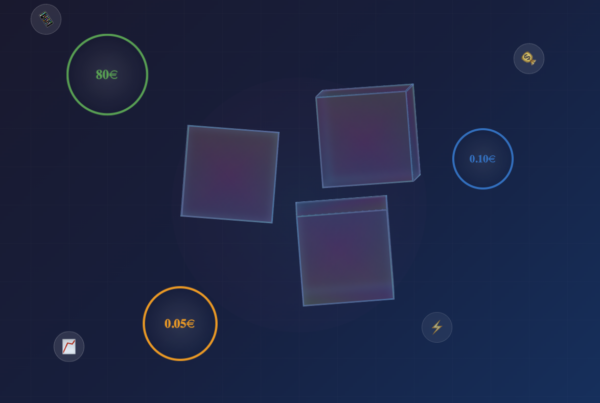Best AI 3D Modeling Tools: Which AI 3D Creation Tools Are Leading?
Introduction: How AI is used in 3D Modelling
Artificial intelligence (AI) is causing a significant change in the design and manufacturing landscape. The production of 3D models, which are essential to many different industries, including furniture, 3D printing, e-commerce, and game development, is being transformed by this innovation.
The creation of 3D models is now quicker, easier, and much more scalable thanks to AI-powered algorithms. Creators can now produce high-quality models from straightforward text prompts or 2D images without requiring a great deal of experience with complicated 3D software.
Digital content creation has changed as a result of the introduction of AI-assisted 3D modelling tools, which enable both individuals and companies to quickly prototype concepts, improve product visualisation, and streamline processes. In this post, we’ll explore the best AI 3D modeling tools, comparing their features, advantages, and use cases to help you choose the right one for your needs.
How AI 3D Modeling Tools Work
AI-driven 3D modelling tools automate the creation of 3D models by utilising deep learning, neural networks, and machine learning. These instruments are capable of:
- Create 3D models from text descriptions using programmes like OpenAI’s Shap-E or 3DFY Prompt.
- Convert 2D pictures into 3D objects using programmes like Mesyh AI, Kaedim 3D, and Mazing.
- Automatically create realistic materials and textures (e.g., Mazing, Luma AI Genie).
- Provide real-time 3D sculpting and animation with AI assistance (e.g., Spline AI, VoxCraft).
AI and conventional 3D modelling methods work together to improve workflows, reduce production costs, and make 3D modelling more accessible to non-experts. AI is an essential tool in digital content creation because it makes rendering, sculpting, and animation more efficient. This lowers entry barriers for novices and increases productivity for experts.
2D images to 3D models with AI
3D modelling used to be a manual process that required familiarity with sophisticated design programmes like Blender, Maya, or 3ds Max. Because AI has significantly lowered the learning curve, developers, artists, and companies can now produce lifelike models in minutes as opposed to hours or days. Now that deep learning algorithms can comprehend textures, shading, and structures, models are guaranteed to be both aesthetically pleasing and functionally accurate for practical uses.
Key Features to Look for in an AI 3D Creation Tool
When choosing the best AI-powered 3D modeling tool, consider the following key factors:
- Ease of Use – Does the tool require advanced skills, or is it beginner-friendly?
- Input Methods – Can it generate 3D models from text prompts, images, or sketches?
- Export Formats – Does it support STL, OBJ, FBX, GLB, or other common 3D file formats?
- Realism & Detail – How accurate and high-quality are the generated 3D models?
- Customization & Editing – Can users modify and refine AI-generated models?
- Industry Applications – Is it optimized for game development, e-commerce, or industrial design?
- Pricing & Accessibility – Is it a free tool, or does it require a subscription?
Selecting a tool that aligns with your specific needs ensures efficiency, whether for creative exploration or professional-grade production.
Test MAZING 2D to 3D AI Tool for Free
Top AI 3D Modeling Tools: A Side-by-Side Comparison
Here are some of the best AI-powered 3D modeling tools available today:
Mazing
Mazing is an AI-powered Web AR platform designed for e-commerce businesses. It allows retailers to integrate 3D product models and interactive AR experiences into their online stores with minimal effort. Mazing’s intuitive platform enables users to create realistic 3D models and use Web AR features like floor tracking, wall tracking, and virtual try-ons.
Best For:
- Online retailers looking to increase customer engagement
- Businesses needing scalable 3D model creation
- Augmented reality (AR) product visualization
OpenAI Shap-E
Shap-E, an innovation from OpenAI, converts text prompts into high-quality 3D models with remarkable speed. It surpasses its predecessor Point-E, offering better fidelity and faster processing.
Best For:
- Designers creating prototypes from text
- Artists looking to quickly generate 3D model
3D AI Studio
A German startup offering state-of-the-art AI technology for generating 3D models from text descriptions or images. It supports glb, fbx, obj, stl, and usdz formats and allows users to create their first five models for free with flexible pricing options.
Best For:
- Businesses needing custom 3D modeling solutions
- Users looking for affordable AI-powered 3D tools
LATTE3D
Developed by NVIDIA, LATTE3D is an advanced AI solution promising lightning-fast 3D model generation. Though still in the research phase, it showcases NVIDIA’s commitment to pushing AI technology forward in 3D modeling.
Best For:
- Research and development in AI-driven 3D modeling
- Users seeking cutting-edge AI solutions
CADScribe
A revolutionary software offering 3D model generation from textual descriptions, particularly focused on technical CAD components. It aims to streamline design processes and make 3D modeling easier for engineers and product designers.
Best For:
- Engineers requiring detailed CAD models
- Industrial applications needing AI-powered modeling
OpenAI Shap-E
Shap-E, an innovation from OpenAI, converts text prompts into high-quality 3D models with remarkable speed. It surpasses its predecessor Point-E, offering better fidelity and faster processing.
Best For:
- Designers creating prototypes from text
- Artists looking to quickly generate 3D models
Luma AI Genie
Luma AI’s Genie, initially called Imagine 3D, transforms text descriptions into 3D assets. It’s a Discord-based AI tool currently in beta testing.
Best For:
- Game developers needing quick asset generation
- Concept artists exploring AI-powered modeling
Meshy AI
Meshy.AI revolutionizes 3D model creation by transforming text and image inputs into high-quality 3D models in under a minute. Combining advanced AI technology with user-friendly design, it streamlines the modeling process for both experts and beginners.
Best For:
- Designers crafting quick 3D prototypes
- Creators seeking effortless 3D model generation
3DFY Prompt
3DFY Prompt specializes in text-to-3D model conversion, making it accessible to both beginners and professional designers. It’s a subscription-based platform with a user-friendly interface.
Best For:
- Rapid prototyping
- Marketing and advertising visuals
Spline AI
Spline AI is an innovative platform for AI-assisted 3D modeling, allowing users to create 3D objects, animations, and textures using simple text prompts.
Best For:
- 3D animation and motion design
- Artists who want AI-assisted creativity
Kaedim 3D
Kaedim 3D specializes in converting 2D images into 3D models, supporting multiple file formats for seamless export.
Best For:
- Architects and industrial designers
- Professionals who need precise 3D models from sketches
Conclusion: Choosing the Right AI 3D Modeling Tool for Your Needs
The industry has been completely transformed by AI-powered 3D model generators, which have increased the accessibility and efficiency of content creation. There is an AI 3D modelling tool that can be used for any purpose, including game assets, product models, architectural renderings, and AR-ready visuals.
Mazing’s 2D image to 3D model engine is revolutionary for furniture companies and e-commerce brands. Shap-E and 3DFY Prompt are great options if you’re searching for AI-generated text-to-3D tools.
We can anticipate even more potent, effective, and lifelike 3D modelling capabilities soon as AI develops further. 🚀





